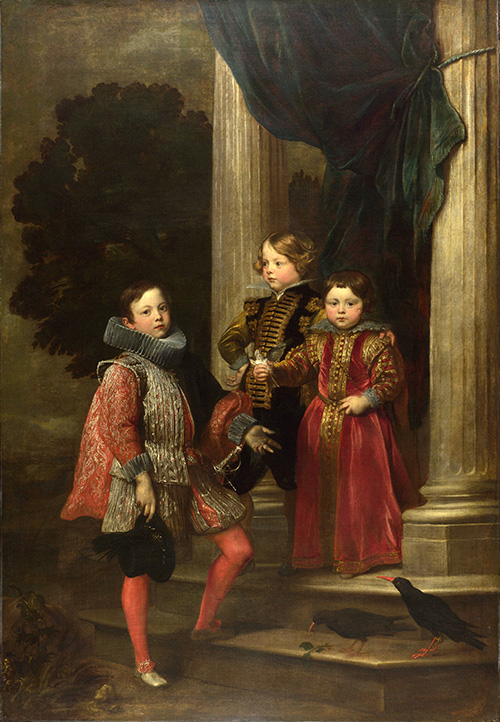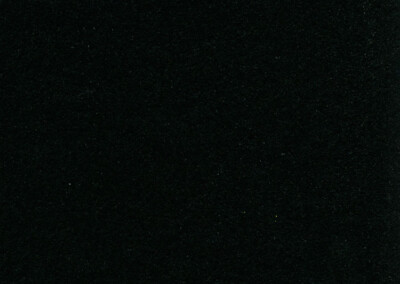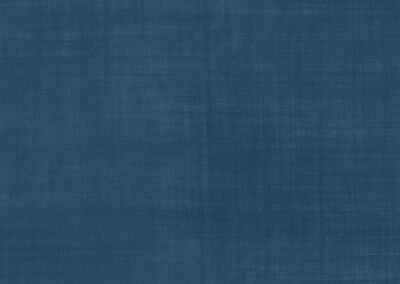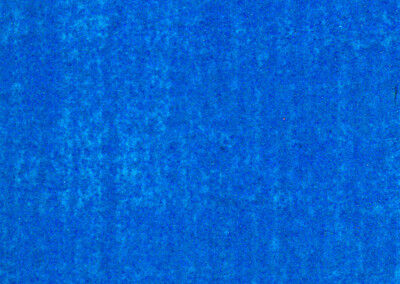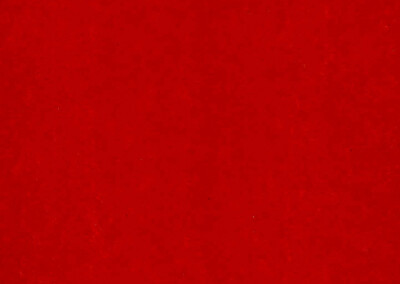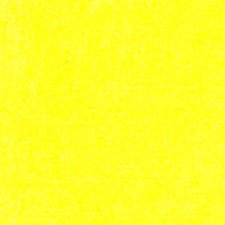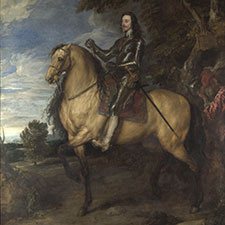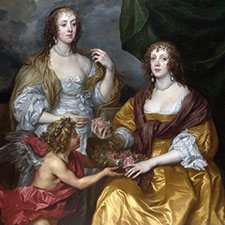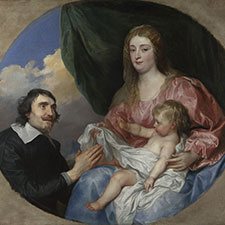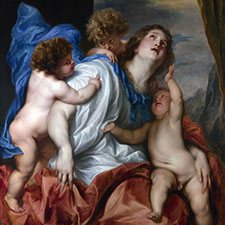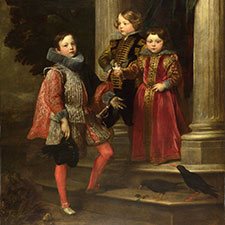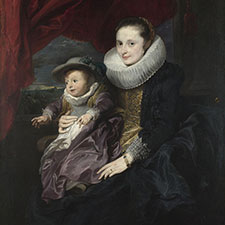Anthony van Dyck, The Balbi Children
ca 1625-27Paintings sorted by Historical period | Painter | Subject matter | Pigments used
Overview
Medium: Oil
Support: Canvas
Size: 219 x 151 cm
Art period: Baroque
Van Dyck painted this portrait of three children of an aristocrat family during his stay in Genoa. The sitters are not identified but the painting was in the possession of Constantino Balbi and was named after him.
The pigment analysis and the investigation of the painting reveal a very elaborate glazing technique that Van Dyck had not used in his later work. The reddish-blue curtain and the oldest boy’s dark dress are prominent examples of this painting technique.
Pigments
Pigment Analysis
This pigment analysis is based on the work of the scientists at the National Gallery London (1). The scientists employed x-ray radiography (XRR), energy dispersive x-ray spectroscopy (EDX), and x-ray diffraction (XRD) to gain insights into the inner layers of the painting and to identify the pigments.
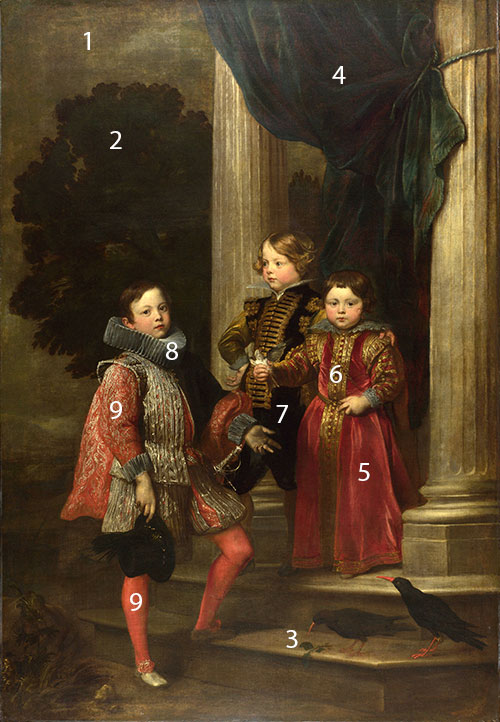
1 Sky: heavily discoloured smalt. The discoloration of this pigment with time has been thoroughly investigated and is described in several references on the webpage on smalt on this website under the tab ‘Properties’.
2 Dark brown foliage: yellow-brown lake, black and degraded smalt. The remaining green spots contain verdigris.
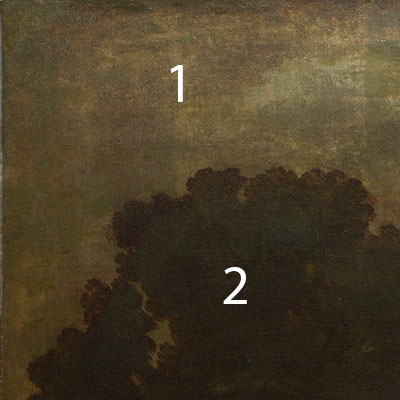
3 Green sprig of foliage on the steps: azurite mixed with a yellow lake.

4 Green and red curtain: Underlayer consists of orange-red pure vermilion modeled with vermilion mixed with red ochre and white, and then further modeled in two contrasting paints. One of them is based on indigo and the other on a rich crimson carmine cochineal lake. The final shimmering effect was achieved by glazing and scumbling (applying light-colored paint with little to no medium over a darker area) with carmine lake, carmine lake mixed with indigo, and pure indigo.
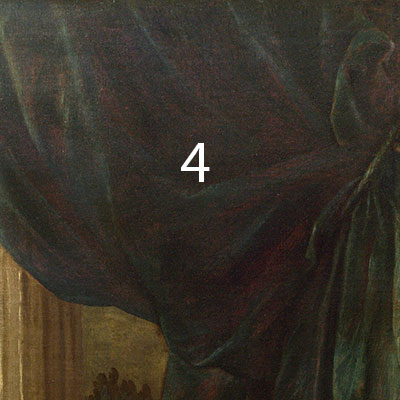
5 Red dress of the youngest child: vermilion glazed over with carmine lake.
6 Embroidered gold frogging and embroidery: lead-tin yellow.
7 Dark dress of the boy in the middle: deep coloured green glazes based on verdigris, modeled at the surface discontinuously with a dark red glaze.
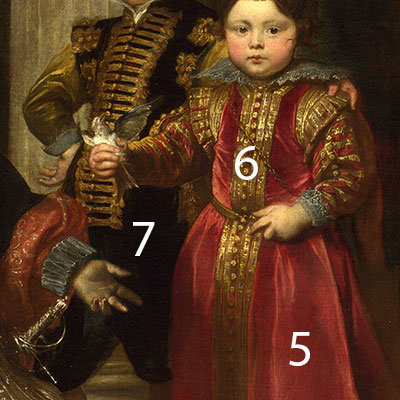
8 Grey ruff, silvery lace, and embroidery: lead white and charcoal black mixed with finely ground pale grey-blue smalt.
9 Oldest boy’s red costume: vermilion.

References
(1) Ashok Roy, The National Gallery’s Van Dycks: Technique and Development, National Gallery Technical Bulletin, Volume 20, 1999, pp. 59-63. Available as pdf.
Pigments Used in This Painting
Resources
See the collection of online and offline resources such as books, articles, videos, and websites on Anthony van Dyck in the section ‘Resources on Painters‘

